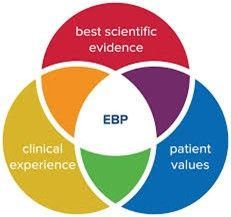3 Myths about the Autism Spectrum
Despite all the new information about the autism spectrum, there are still a lot of myths and misunderstandings about the condition.
With the 2013 version of the Diagnostic and Statistical Manual of Mental Disorders, the three categories of “Autism”, “Pervasive Developmental Disorder”, and “Asperger’s Syndrome” were erased. The new perspective in reviewing those individuals with extensive difficulties in communication and behavior is that their behavior ranges in severity. Which is a good thing for agency professionals working with those on the autism spectrum, as each person has individual needs and solutions.
Because each youth or adult on the autism spectrum is like a combination lock. Each lock has different numbers which, in combination, allows one to unlock it and open it.
In the same way, each youth or adult on the autism spectrum perceives the world differently. One may be fascinated to the point of perseverating about cars, another about machines, another about newspapers, etc. To have a boilerplate approach to them won’t work. It helps to have a structured approach such as applied behavior analysis, which focuses on which behaviors create problems for the person and which to resolve.
To help with the public and professional concepts of autism, the here are some myths on autism. Here are three of them:
People with autism can’t understand the emotions of others. Those on the autism spectrum have difficulties managing their own emotions and at times don’t understand the communications of others. There are certain things they don’t comprehend, like non-verbal language. It’s hard for them to grasp sarcasm, a shrug of the shoulders, a joke, or a heavy sigh. But when someone gives them direct communication, such as crying and feeling sad, or laughing, this is understood. This helps when professionals and parents work with the person to make sure they are looking directly at them and conveying their words and mannerisms in sync.
Autism is just a brain disorder. It is common for people with autism or on the autism spectrum to also have other health conditions. For instance, gastrointestinal disorders such as acid reflux can occur. In addition, food or other allergies may affect them as well. Sometimes those on the spectrum also may have seizure-type disorders and need medication. When evaluating a person with autism, it is important to also know their medical health and coordinate care with their physician.
People with autism are like Freddie Highmore’s character in The Good Doctor. The idea of a spectrum now means that each person has their behaviors, perspectives, talents, and characteristics. This actor portrayed someone with autism who also has what’s known as savant syndrome, which means that they display certain capabilities (in this case, medicine) far more than the average person. While some on the autism spectrum may have some remarkable abilities, it does not apply to each person.
The key to all these myths is that each person on the spectrum should be considered as an individual. Treated as one and have their special plan which may work for them and not necessarily for others.
To get information on other myths, here’s an article from Nevada’s Department on Aging and Disability Services.
If your organization would like more information about PRAXES’ training, please contact us.




